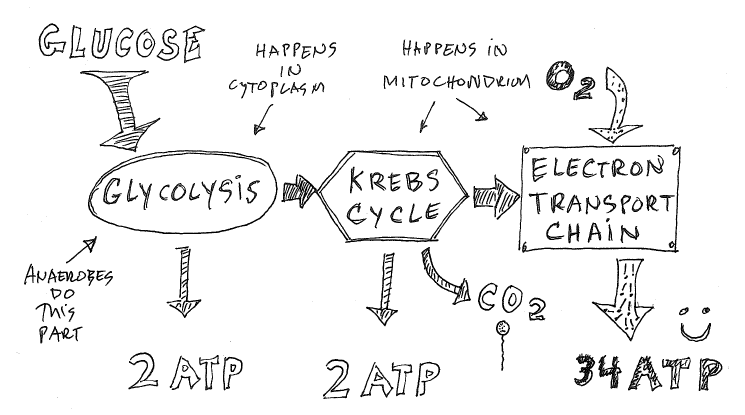In what process do animals use glucose and oxygen?
1 Answer
Animals and all life that requires oxygen to survive, use glucose and oxygen in aerobic cellular respiration. Aerobic cellular respiration breaks down glucose molecules, storing the energy released during the process in molecules of ATP (adenosine triphosphate), which provide the energy needed for cell(s) to do work.
Aerobic cellular respiration can produce 36 to 38 molecules of ATP from one glucose molecule, whereas anaerobic respiration (glycolysis followed by fermentation) produces a net gain of only 2 molecules of ATP from one glucose molecule.
Aerobic respiration consists of three stages: glycolysis, which occurs in the cytoplasm; and the Krebs cycle and electron transport chain, which occur in the mitochondria. The majority of the ATP is produced during the electron transport chain.
Oxygen is the last electron acceptor in the electron transport chain, and combines with electrons and
The overall chemical equation describing aerobic respiration is:
The basic process of aerobic respiration is:



